ASUSTeK Computer U1 Wireless Link USB Dongle User Manual Q WL U1D61 RoHS FCC V10
ASUSTeK Computer Inc Wireless Link USB Dongle Q WL U1D61 RoHS FCC V10
Manual

Q-WL U1D61(RoHS)FCC-V10
Wireless Link USB Dongle
802.11b/g (54 Mbps)
Quick Installation Guide
Version 1.0
March 22, 2006
U1
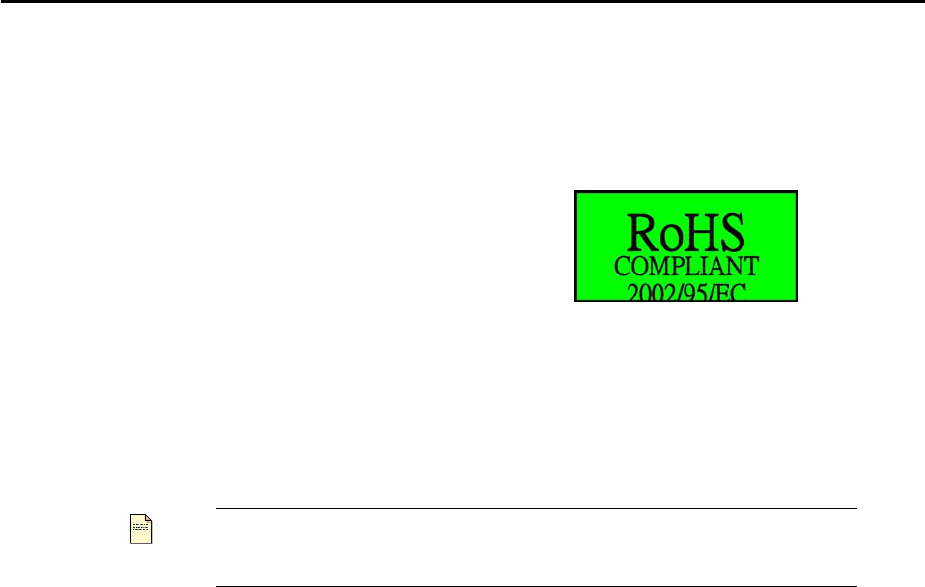
Quick Installation Guide
ii
Statement of RoHS
We recognize the need to be a responsible
corporate citizen. With respect to the current EU
directive and the equivalent domestic legislation
which implement Restriction of Hazardous
Substances (RoHS), We are committed to
producing products supplied into the EU that are
fully compliant to the directive on or before its
respective effective date.
Note
The wireless link USB dongle works based on the operating frequency
ranging from 2412 MHz to 2462 MHz and the operating channels 1 to
11.
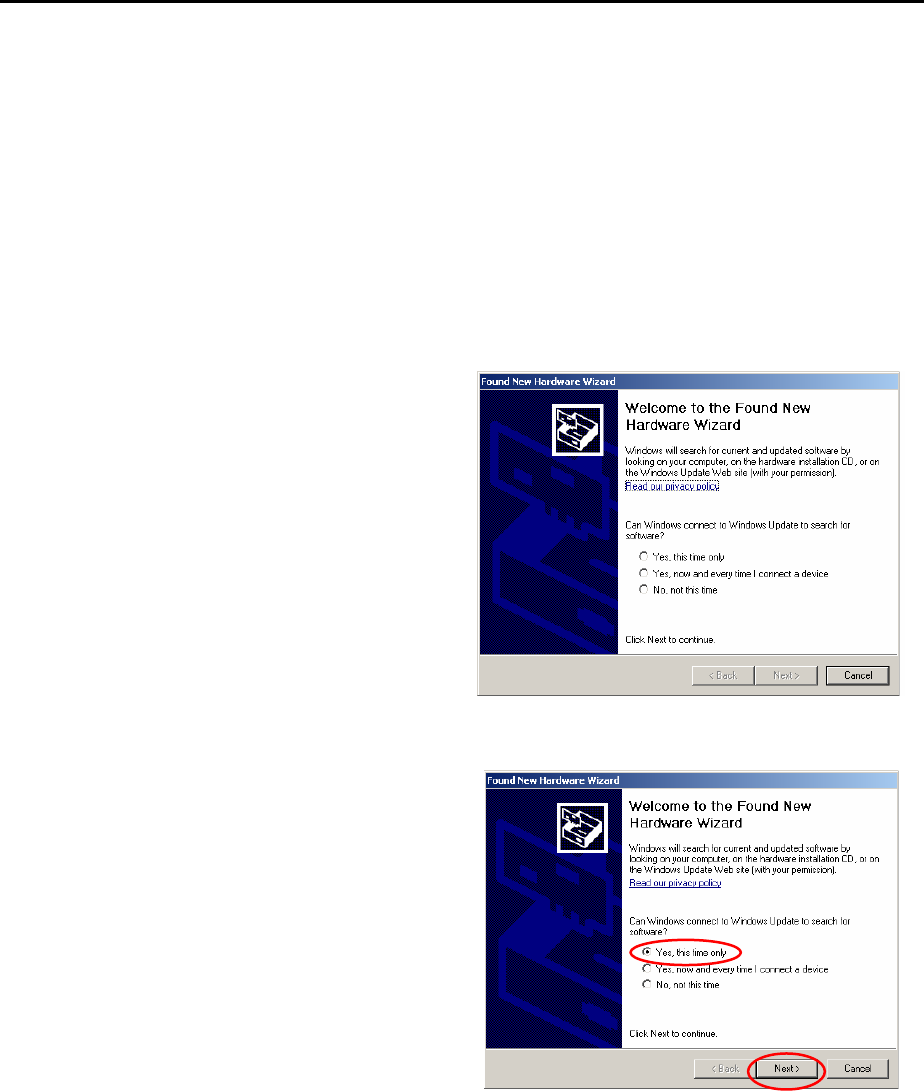
Installing wireless link USB dongle driver
1
Installing wireless link USB dongle driver
This Quick Installation Guide provides you with some basic instructions only. The
following instructions will guide you through overall installation procedure. In
OS-specific situations, you should follow the on-screen instructions to proceed.
Follow these steps below to install the wireless dongle driver.
Step 1: Close all Windows programs that are running.
Step 2:
Insert the dongle into a USB port of your
computer, first. Then, a Welcome to the
Found New Hardware Wizard window
pops up.
Step 3:
Now, you may, for example, select Yes,
this time only. Then, click Next.
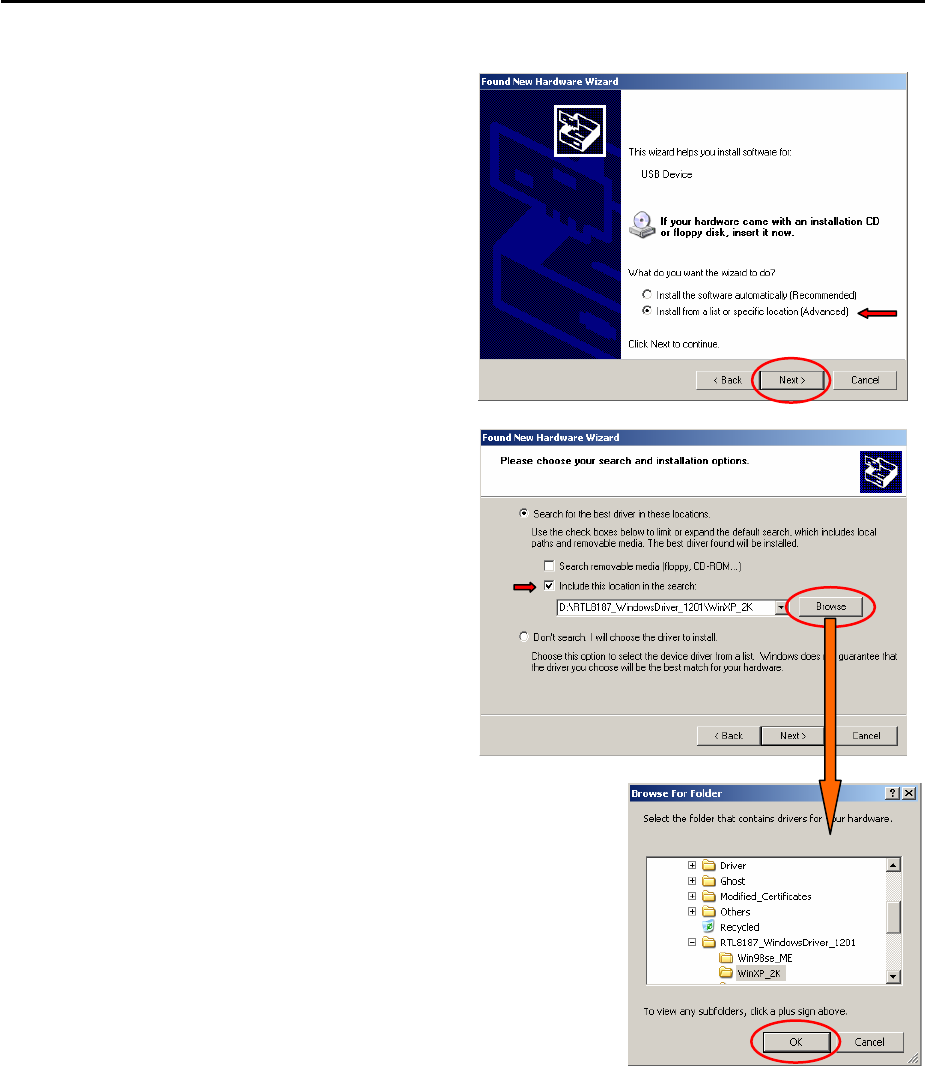
Quick Installation Guide
2
Step 4:
On the window, select Install from a list or
specific location (Advanced) to search
and install the driver. Then, click Next.
Step 5:
Tick off Include this location in the
search: and then click Browse to search
the driver in a specified directory.
Step 6:
Select the folder that contains the driver for
your hardware. Then, click OK.
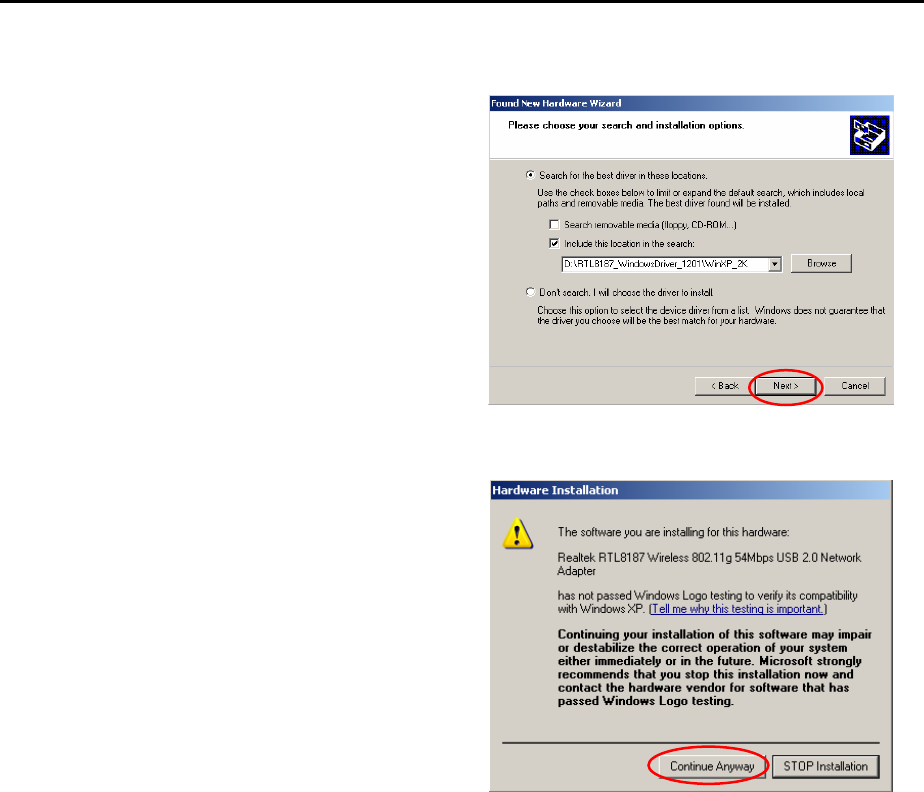
Installing wireless link USB dongle driver
3
Step 7:
Click Next.
Step 8:
You may see a Hardware Installation
window indicating that you are installing
the driver for this hardware of Realtek
RTL8187 Wireless 802.11g 54Mbps USB
2.0 Network Adapter. Then, click
Continue Anyway.
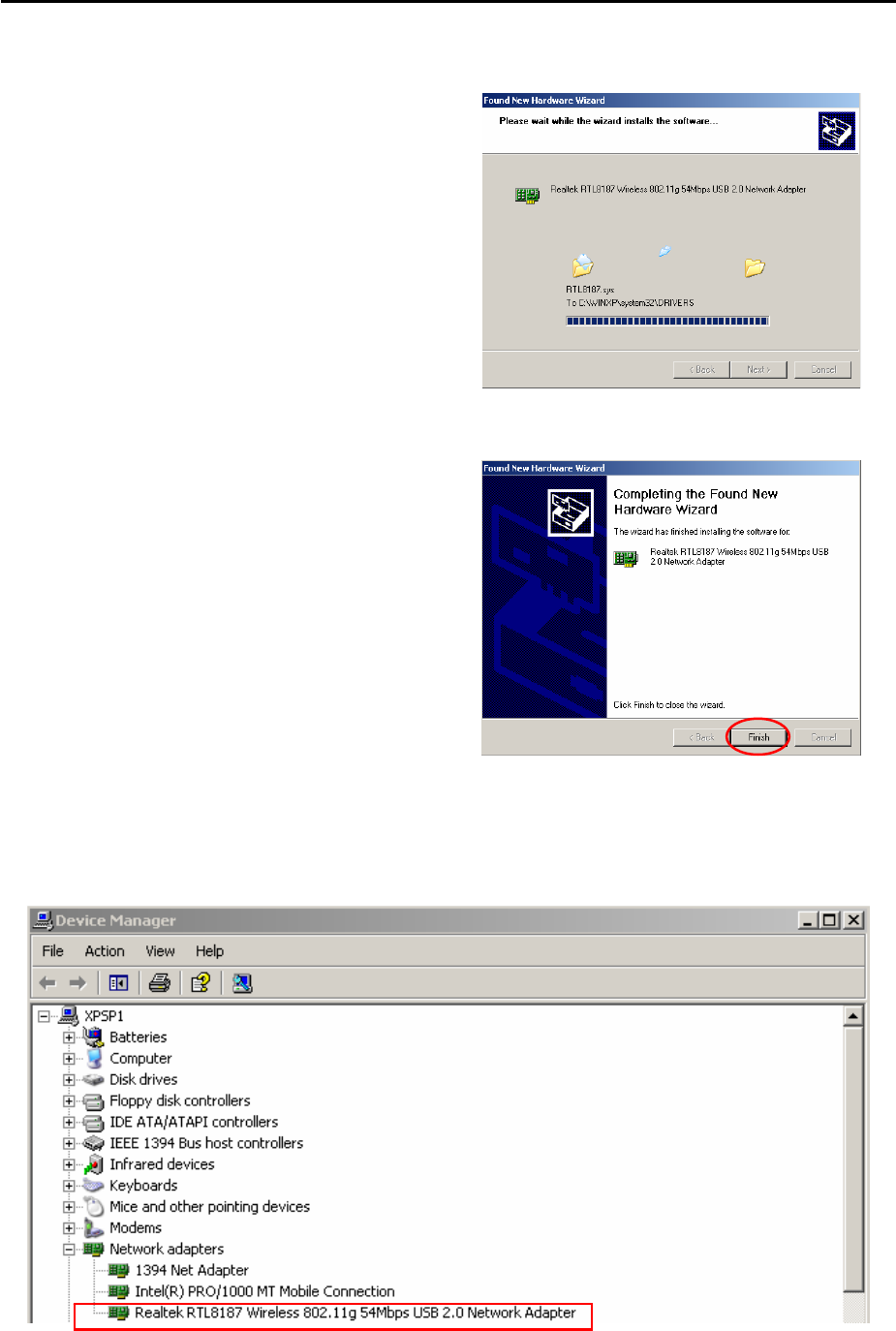
Quick Installation Guide
4
Step 9:
You see a processing window indicating
that the wizard installs the driver… Please
wait a moment.
Step 10:
This hardware driver installation is
completed. Click Finish to complete the
installation process.
Step 12:
When you succeed in installing the driver, you will see the hardware name in the
platform of Device Manager.

Statements of FCC, CE, and DGT
5
Federal Communication Commission Interference Statement
This equipment has been tested and found to comply with the limits for a Class B digital
device, pursuant to Part 15 of the FCC Rules. These limits are designed to provide
reasonable protection against harmful interference in a residential installation. This
equipment generates, uses and can radiate radio frequency energy and, if not installed
and used in accordance with the instructions, may cause harmful interference to radio
communications. However, there is no guarantee that interference will not occur in a
particular installation. If this equipment does cause harmful interference to radio or
television reception, which can be determined by turning the equipment off and on, the
user is encouraged to try to correct the interference by one of the following measures:
- Reorient or relocate the receiving antenna.
- Increase the separation between the equipment and receiver.
- Connect the equipment into an outlet on a circuit different from that
to which the receiver is connected.
- Consult the dealer or an experienced radio/TV technician for help.
FCC Caution: Any changes or modifications not expressly approved by the party
responsible for compliance could void the user's authority to operate this equipment.
This device complies with Part 15 of the FCC Rules. Operation is subject to the
following two conditions: (1) This device may not cause harmful interference, and (2)
this device must accept any interference received, including interference that may
cause undesired operation.
IMPORTANT NOTE:
Radiation Exposure Statement:
This equipment complies with FCC radiation exposure limits set forth for an
uncontrolled environment. End users must follow the specific operating
instructions for satisfying RF exposure compliance. To maintain compliance
with FCC RF exposure compliance requirements, please avoid direct contact to
the transmitting antenna during transmitting.
This transmitter must not be co-located or operating in conjunction with any other
antenna or transmitter.
Specifications of the wireless link USB dongle
Operating Frequency: 2412 MHz ~ 2462 MHz
Operating Channels: Channels 1~11

Quick Installation Guide
6
European Union Notice:
Radio products with the CE marking comply with the R&TTE Directive (1999/5/EC), the
EMC Directive (89/336/EEC) and the Low Voltage Directive (73/23/EEC) issued by the
Commission of the European Community.
Compliance with these directives implies conformity to the following European Norms:
◆ EN 60950 Product Safety
◆ EN 300 328 Technical requirement for radio equipment
◆ EN 301 489-1/-17 General EMC requirements for radio equipment

Statements of FCC, CE, and DGT
7
DGT 警語
根據交通部低功率管理辦法規定:
第十二條
經型式認證合格之低功率射頻電機,非經許可,公司、商號或使用者均不得擅自變更頻
率、加大功率或變更原設計之特性及功能。
第十四條
低功率射頻電機之使用不得影響飛航安全及干擾合法通信;經發現有干擾現象時,應立
即停用,並改善至無干擾時方得繼續使用。
前項合法通信,指依電信規定作業之無線電信。低功率射頻電機須忍受合法通信或工業、
科學及醫療用電波輻射性電機設備之干擾。